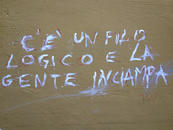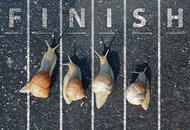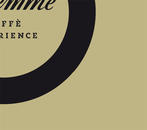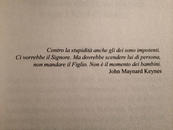Failure
In recent months, we have found ourselves working on, among other things, the corporate image of two new clients. Comparing the two comes naturally: they both sought us out; they both enjoyed much of the work we have produced recently; and they both chose us, convinced that working with us would be fruitful. Both wanted to radically change their image and at the same time distance itself from the competition, both local and global. We were asked to come up with a path towards diversity, if not complete originality – to the degree in which it was possible. The request may seem clear enough, but nothing should be taken for granted. Very often a customer asks us to adapt or improve their image, but not to recreate it from scratch, referencing other competitors or brands as valid models.
In these two cases, however, it was clear that we were given creative freedom. This in our favor: we were hired for this very reason. So we didn’t hold back and we came up with two real "brand stories". It’s hard to say which of the two gave us the most satisfaction. Both required commitment and fun in equal measure. The fact that one client operates in the field of interior design and the other in the food allowed us to come up with two images that are clearly distinct stylistically. The underlying concepts, however, were the same, coinciding with the wishes and objectives expressed by two clients in the initial phase of the jobs. In the end, the outcome of the jobs seemed equally as successful, meeting the clients’ requirements, updating the values of the brand and repositioning it with character in their respective markets.
However, the impact our work had on the two clients was diametrically opposite. One found the new image to be a wild success. The other client considered the result an equally extreme failure. This opposition is telling of the work we do, its schizophrenic insecurity, but also its priceless charm. It’s impossible to get bored with a job like that.
What happened? In the second case, the customer didn’t recognize himself or the campaign we presented. And he didn’t like not recognizing himself. This therefore generated a secondary problem: the image was deemed too distant from the dominant ideas, the typical style and reassuring aspects of the particular field. Certain contradictions caught our eye: the two initial assumptions were to "create distance between the existing image", which was precisely what the one customer found reflected himself; and "distance themselves from the competition", with its traditional, widespread request. It’s needless to try to rationally explain to the customer that this duality presents a conceptual flaw, which being at the base of the project trickled into all aspects of the job. In these cases, all you can do is accept the negative judgment (I don’t like it) and deal with it. The regret for having done an excellent job remains (and it is precisely because it responds consistently to the requirements and objectives, not simply because it was considered beautiful or pleasant) because it will not see the light of day that it deserved.
And about failure. I recently came into contact with the work of philpsopher Paul Morelli, who presents his art of living in a rather original way (at least for us in the West). He calls it “art of failure”. He states that it is necessary to fail in order to eliminate any dependence on results and focus on the present, actually living independently and therefore consciously. Talking about failure in these terms appears a vacuous rant at first, I admit. But I also admit that Morelli does a good job of supporting of his eccentric vision. He begins with a fierce critique of the dominant ideas, cultural mythologies assumed as poses, and the tyranny of the single thought. He argues that all anti-creativity tend to create masses, which may be laborious but complacent, and morally defenseless slaves and victims of success, their own or that of others. Then he begins to show us paths to focus, discussed more generally: to give up the sense of things known, to wander aimlessly, without thinking calculating the result, to recognize that opposites are not opposed, to accept the impermanence of things, to give up the presumption of control, always fatally illusory ("the world can be received, not taken"). A list of attitudes that refer to certain Eastern philosophies, for example, the "detachment" of the Sufis or in relation to Zen, which involved a slow and laborious inner discipline that we Westerners see as blissful forms or wisdom or an exercise in snobbishness. These are attitudes that Morelli couples with ethics, which include caring for one’s memory and judgment, plus taking direct responsibility for one’s actions. This is particularly new to Italians who are in agreement when it comes to general values, but don’t believe they apply to themselves. A true science of the mind, in short, made of seemingly contradictory attitudes and precepts: the failure experienced as a spiritual exercise can limit dependence on the result - and therefore the judgment of others - such as to focus attention on the present, capable of breaking a habit that makes our lives trivial and mechanical.
The habit that makes our lives trivial and mechanical. The dangers of habit were already known to Cicero, Lucretius, Seneca, and Augustine. Habit, or the routine of daily life, prevents us from seeing the world as something sublime, always new, interesting precisely because it’s unexpected, paradoxical. Habit prevents us from transcending the human experience.
I am surprised to note that Morelli’s art of failure is composed largely of the same ideas that are at work in the creative mind. But I do not think it's a coincidence. Creativity is constantly under question, or kept in check. It must, therefore, be able to receive praise with suspicion, disillusionment and circumspection, and be able to fail just as indicated by Morelli, in a critical, ethical, and spiritual way in order to be freed from the necessity of success, and therefore able, sometimes, in the states of grace, to avoid half-measures, compromises, the shameful excuse of talking yet again with the fullness of a charm that seduces, passing sleepless nights to decide whether a sign, a color or a word should be removed or if it is fully justified in harmony and disharmony of a set that was not there before and it there now. Creativity is an impossibly precarious form of a beauty that seems a tad too much and that continues to seduce us, despite our limitations and all despairing of mediocrity all around.
18/03/2015 Filippo Maglione




































































